I was at the Wildfowl and Wetlands Trust’s Slimbridge reserve recently. It was near high tide on the river Severn, and the whole landscape (which had been bone-dry in the summer) was saturated from torrential rain over several days. As a result, the fields of the reserve are teeming with wildlife.
Imagine those films you’ve seen on the BBC of the plains of Africa, full of wildebeest. Now turn them into vast, uncountable numbers of birds. Sitting in one of the hides, I tried counting the golden plover alone. You can’t count them one by one. You have to work out what a hundred looks like and look for blocks of birds about that size. I made it to well over 1,200 just on the piece of field nearest to me.
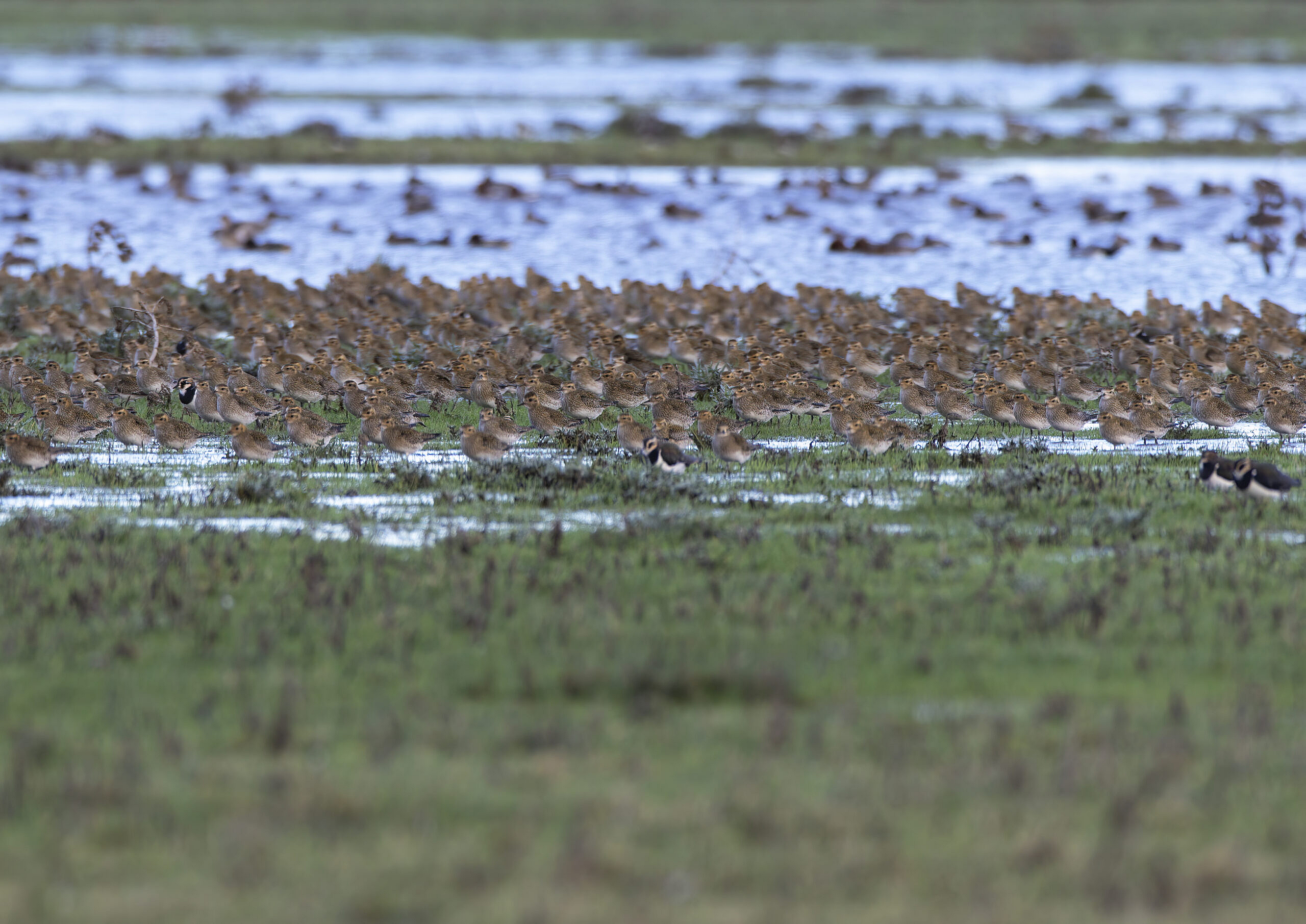
There were lapwing, greylag geese, and a lone Bewick’s Swan, too – the swan a migrant from Russia and the near East, one of forty or so at the reserve. Now and then a crow or a rook would flow over the fields and the flocks would stir uneasily, some birds taking to the air and then quickly settling again once they realised that there was no danger. Flocks of birds are like a single organism. The last one off the ground is all too often the first one eaten by a predator, so they have a group response. If your neighbours take to the air, you do too. Fly first and ask questions later. A skimming crow causes a ripple on the ground, like a wake behind a speedboat, as birds stir and settle down.
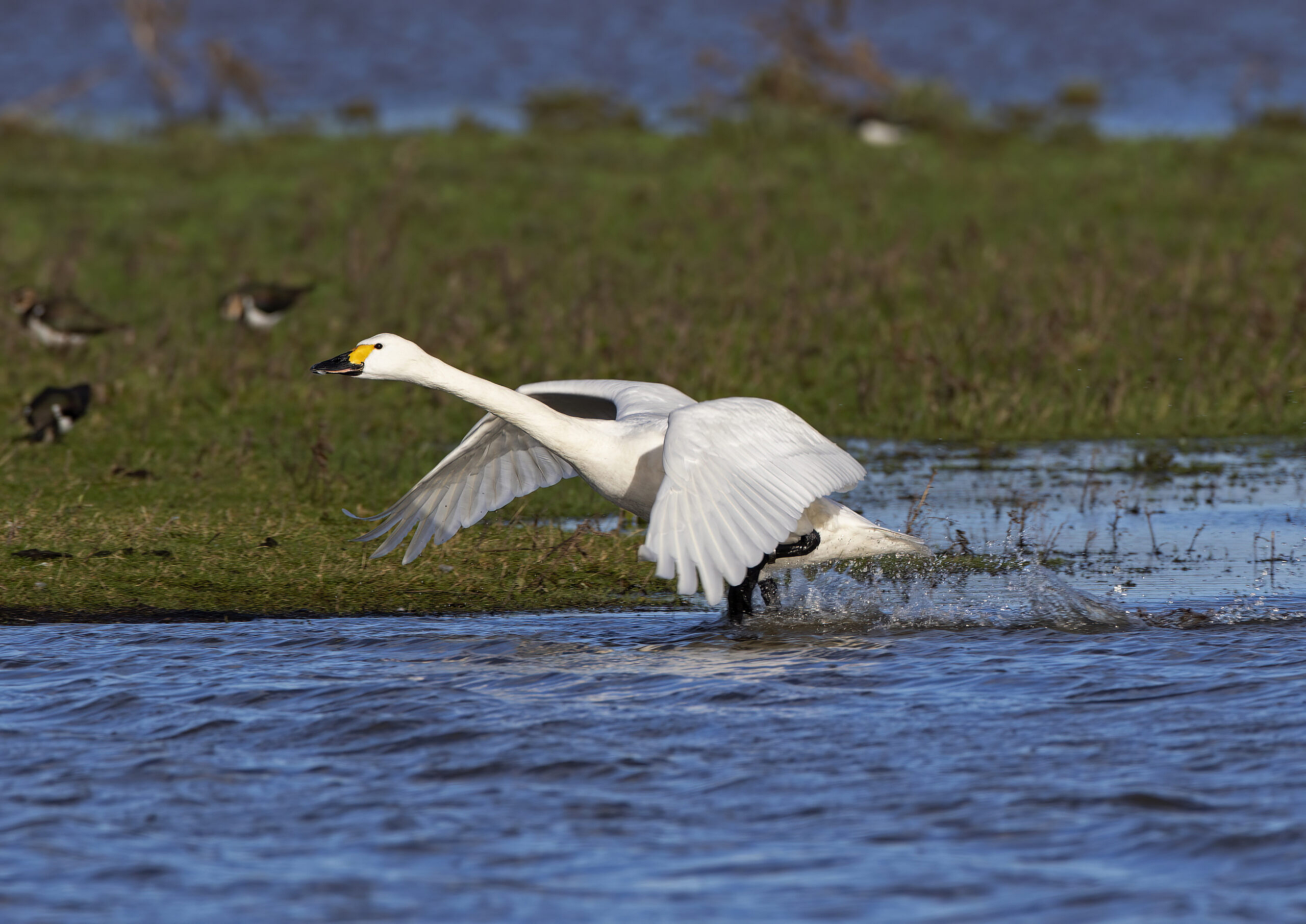
Then the peregrine falcon arrived.
Although a peregrine will pluck a bird from the ground – I’ve seen them do it – their preferred method of attack is the ‘stoop’, a screaming dive from a hundred or so feet up. They fold their wings in and dive at up to 240mph (300 kph). Imagine sticking your head out of the window of a car doing more than three times the motorway speed limit. They have special nostrils to stop the air pressure from exploding their heads. It’s an awesome sight. They swing their talons out and pluck the stunned prey bird from their air. But there is a problem with this method: do it too close to the ground and both peregrine and prey will die. So they need their prey aloft. That’s easy: fly low over the flocks on the ground and scare them up. The peregrine skimmed the field, and it exploded. In a silent stream, as if the world had been turned upside down and everything was falling off, the massed flocks took to the air. A constant stream of life, pouring up from the ground. It is no exaggeration to say that tens of thousands of birds were taking off. And yet, at the distance I was watching from, it was almost silent. Don’t waste breath calling… FLY!
Almost immediately, the mass separated. Birds of a feather do indeed flock together, as the old saying goes. I photographed what I thought was a mass of golden plover low to the ground which turned out to be hundreds of black-tailed godwit that I hadn’t even known were there. The lapwings, overlarge wings flapping like handkerchiefs at a morris dance, also stayed relatively low. Above them, high in the sky, were thousands of golden plover. Lapwings rely on distraction, flapping white underwings wings and wheeling to create a confusing kaleidoscope pattern so that the peregrine can’t lock on to an individual bird. The plover rely on flying far higher than the peregrine. Peregrines attack downwards, not upwards. It seemed to work. The peregrine gave up and flew off to a copse of trees. It would have another go later. Flocks wheeled in single-species murmurations, speckled patterns of lapwings, close-knit godwits, a small crew of starlings that for once were not the stars of the show, high-altitude, strung-out wisps of plover.
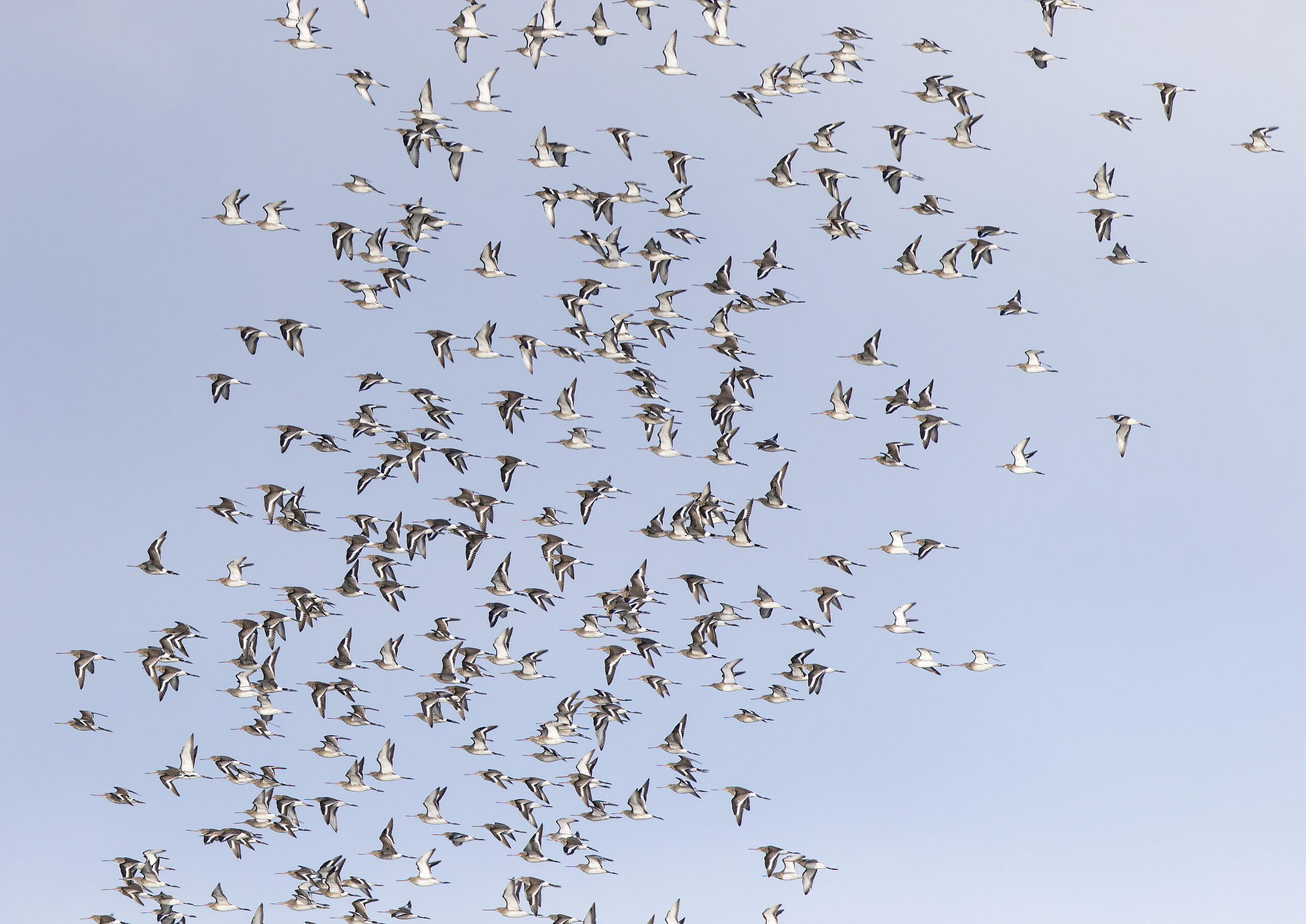
It was breathtaking. One descending flock of plovers buzzed the hide, and this time I did hear it, a softer version of the sound of a train speeding past. The air in the hide ruffled momentarily. Slowly, one by one, the flocks landed again, in haphazard groups, as bolder birds showed it was safe and others followed on slowly. Last of all were the plovers, hesitant, fearful, starting to land, changing their minds, and then trying again, each time surging skywards at the slight disturbance. Eventually they, too, settled and the field was back to a vast vista of dots.
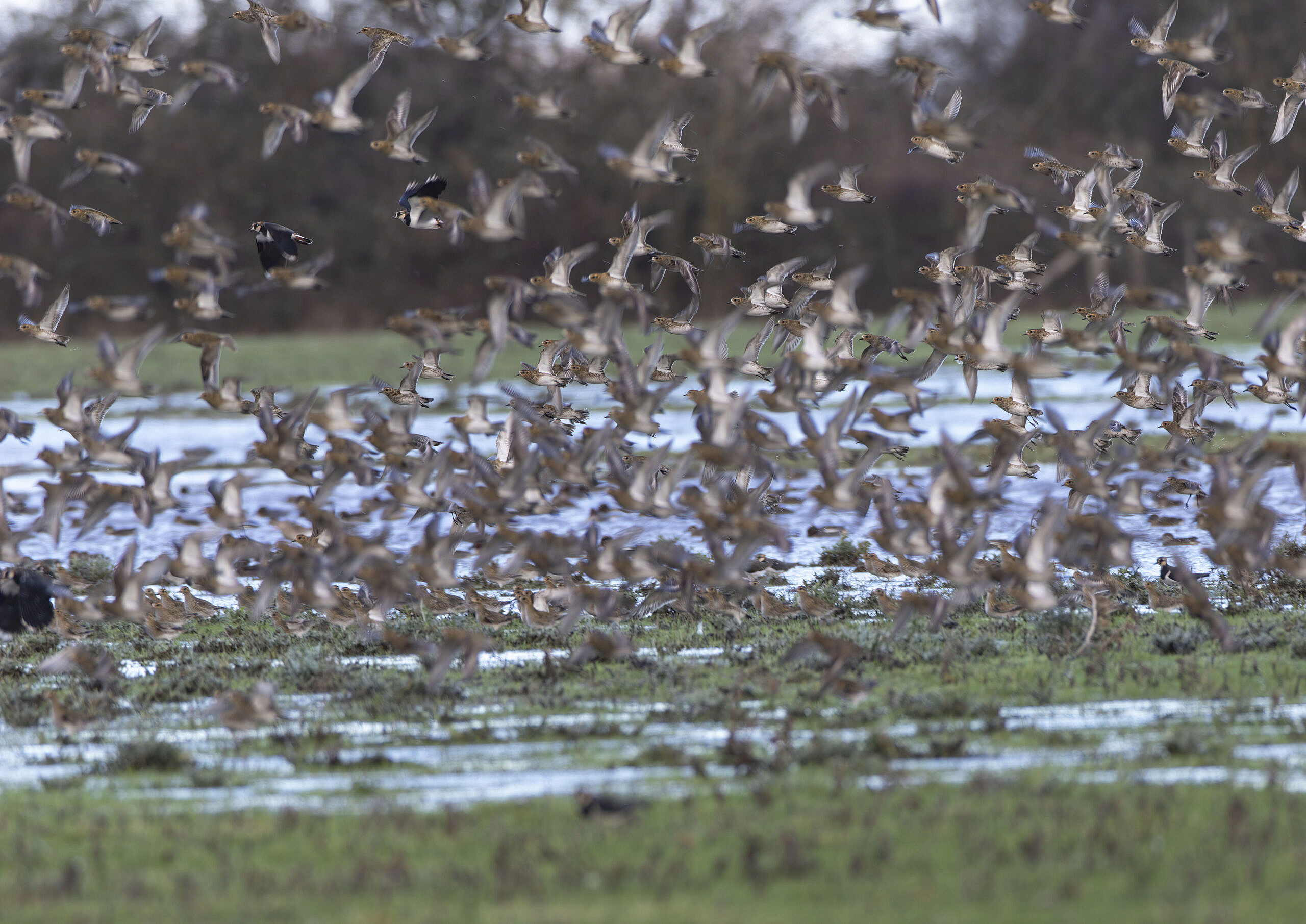
The thing is, this truly breathtaking spectacle used to be common. Huge flocks like this used to be everywhere. Our grandparents might have looked at what I’d seen, shrugged, and gone back to work because it was nothing special, just another mass of excited birds. These wheeling, sky-darkening flocks are like a living artwork, an avian Lowry. If I shredded Lowry’s work there would be an outcry. Yet we are shredding these living artworks to the sound of silence. In your lifetime, there will come a point where the silence will come not from the massed downbeat of wings, but from an empty sky.
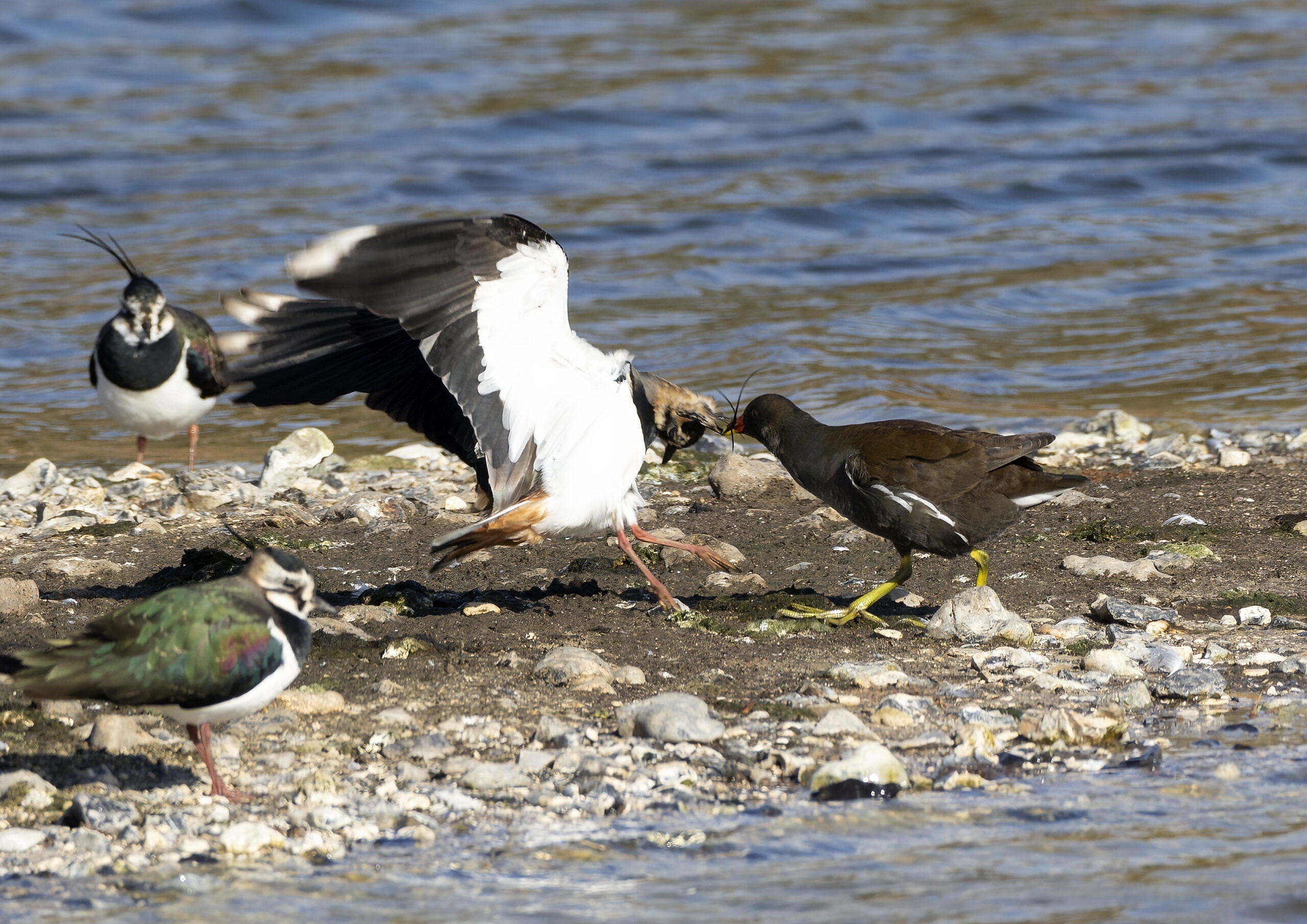

1 comments On In a roar of silence, they ascend
Super piece Steve.
Comments are closed.